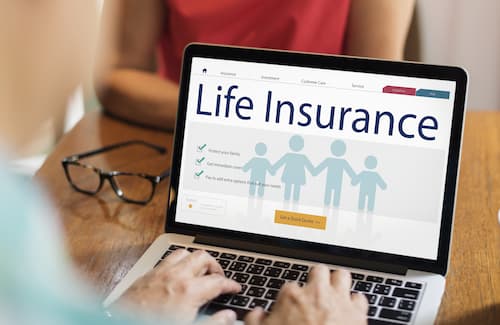How much does term life insurance cost?
Term life is typically much cheaper than whole life insurance because it poses less risk to insurance companies. Term life insurance only pays out if you die within the timeframe you carry the insurance.
By contrast, whole life insurance builds cash value and remains with the policyholder until death. That means the insurance company is more likely to have to pay a claim.
Although term life is cheaper on average, many factors impact life insurance costs. Some carry more weight than others.
If you want cheaper term life insurance rates, don’t smoke. Smokers pay much higher rates for life insurance than nonsmokers. That should be no surprise, according to Maureen Shaughnessy, senior actuary, experience studies at LIMRA and LOMA.
She points out that term insurance premiums “are heavily influenced by mortality rates.” She adds that life insurance industry mortality tables indicate that a person who smokes has a two to three times higher chance of dying in any given year than someone who does not smoke.
“Because their likelihood of dying is higher, people who smoke pay higher premium rates than those who do not,” Shaughnessy says.
Following is a breakdown of how much you can expect to pay for term life insurance.
How much is $500,000 of term life insurance?
The cost of a $500,000 term life insurance policy differs greatly depending on whether you are a nonsmoker or a smoker, as you can see in the following term life insurance rate charts. Here are the rates for nonsmokers:
| Age | Gender | 10-year term | 20-year term |
|---|---|---|---|
| 25 | Female | $281 | $358 |
| 25 | Male | $344 | $442 |
| 35 | Female | $313 | $440 |
| 35 | Male | $370 | $516 |
| 45 | Female | $577 | $845 |
| 45 | Male | $694 | $1,071 |
| 55 | Female | $1,145 | $1,870 |
| 55 | Male | $1,554 | $2,620 |
The rates are much higher for smokers:
| Age | Gender | 10-year term | 20-year term |
|---|---|---|---|
| 25 | Female | $629 | $798 |
| 25 | Male | $826 | $1,060 |
| 35 | Female | $776 | $1,158 |
| 35 | Male | $972 | $1,436 |
| 45 | Female | $1,638 | $2,515 |
| 45 | Male | $2,093 | $3,338 |
| 55 | Female | $3,476 | $5,528 |
| 55 | Male | $4,823 | 7,711 |
How much is $750,000 of term life insurance?
Once again, nonsmokers get better rates than smokers, although rates overall climb higher as coverage levels increase:
| Age | Gender | 10-year term | 20-year term |
|---|---|---|---|
| 25 | Female | $376 | $484 |
| 25 | Male | $467 | $608 |
| 35 | Female | $420 | $604 |
| 35 | Male | $501 | $714 |
| 45 | Female | $806 | $1,200 |
| 45 | Male | $975 | $1,526 |
| 55 | Female | $1,657 | $2,746 |
| 55 | Male | $2,256 | $3,855 |
Here is how much smokers pay:
| Age | Gender | 10-year term | 20-year term |
|---|---|---|---|
| 25 | Female | $900 | $1,138 |
| 25 | Male | $1,187 | $1,522 |
| 35 | Female | $1,098 | $1,667 |
| 35 | Male | $1,389 | $2,073 |
| 45 | Female | $2,369 | $3,665 |
| 45 | Male | $3,047 | $4,885 |
| 55 | Female | $5,117 | $8,236 |
| 55 | Male | $7,153 | $11,572 |
How much is $1 million of term life insurance?
By the time you reach $1 million in coverage, rates have climbed substantially. However, they are still much cheaper for nonsmokers:
| Age | Gender | 10-year term | 20-year term |
|---|---|---|---|
| 25 | Female | $446 | $591 |
| 25 | Male | $558 | $749 |
| 35 | Female | $504 | $750 |
| 35 | Male | $600 | $899 |
| 45 | Female | $984 | $1,521 |
| 45 | Male | $1,208 | $1,950 |
| 55 | Female | $2,100 | $3,534 |
| 55 | Male | $2,841 | $4,961 |
Here are the costs of a $1 million policy for smokers:
| Age | Gender | 10-year term | 20-year term |
|---|---|---|---|
| 25 | Female | $1,100 | $1,434 |
| 25 | Male | $1,447 | $1,913 |
| 35 | Female | $1,360 | $2,116 |
| 35 | Male | $1,712 | $2,650 |
| 45 | Female | $2,990 | $4,726 |
| 45 | Male | $3,881 | $6,299 |
| 55 | Female | $6,467 | $10,536 |
| 55 | Male | $9,080 | $14,937 |
What affects the cost of term life insurance?
Many factors impact how much you pay for term insurance. They include:
- Smoking status. Smokers face much higher risks of developing fatal health problems. As a result, insurers charge higher premiums to compensate for this risk.
- Age. The older you are, the higher your costs. As you might expect, term life insurance rates for seniors can be quite expensive. A healthy female who is 25 can expect to pay just $358 annually for a 20-year term life insurance policy. By contrast, a healthy female who is 55 will pay $1,870 -- more than five times the rate of the younger woman.
- Gender. Women generally pay less than men because they have longer life expectancies. Thus, a healthy 55-year-old male pays $4,961 for a 20-year term life insurance policy with a $1 million death benefit. A woman of the same age and health status pays just $3,534.
- Physical condition. Those who are obese or have chronic illnesses and other health problems might pay more for life insurance.
- Occupation and hobbies. If you work in a coal mine or enjoy skydiving in your free time, you will pay more for coverage.
The amount of life insurance coverage you choose and the term length of the policy also play a big role in calculating rates. Riders that you add to your policy -- such as for accidental death or disability -- also can raise the cost of a policy.
How to get cheaper term life insurance
Some factors determining the price you pay for term insurance are outside your control. For example, your age and gender impact your costs.
There are ways to mitigate these factors. The best way to save is to buy life insurance immediately. "Buy at a young age, as life insurance premiums increase by age," Shaughnessy says.
There are other things you can do to lower your costs. The best way to get a good deal on life insurance is to shop around for coverage.
Each life insurance company has its formula for setting rates. Comparing term life insurance quotes from several providers can help you find the right coverage at the best price.
You can also qualify for the best term life insurance rates by improving your health.
"Maintain a healthy lifestyle, including properly managing any chronic conditions like high blood pressure or diabetes," Shaughnessy says.
Most importantly, if you smoke, quit. That will lower your premium costs, but not overnight. You will likely have to be tobacco-free for a year or two before you see a benefit in your rates.
Finally, there is one other way to lower your term life insurance costs. "If the total premium is still more than you can currently afford, you can decrease the amount of death benefit you are purchasing," Shaughnessy says.
Methodology
Insurance.com obtained average rates in March of 2023 for term life insurance at a variety of ages and coverage levels from the Compulife rating system. Rates are based on otherwise healthy smoking and non-smoking applicants.





